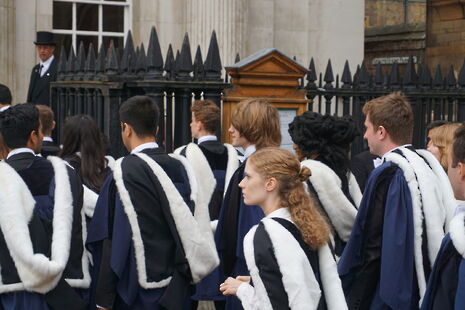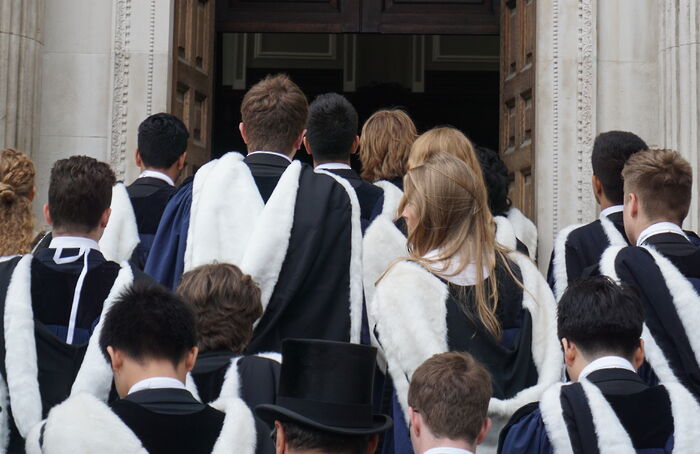Women in maths: why the numbers don’t add up
Varsity speaks to Cambridge academics to get to the bottom of why women are so underrepresented in the subject

127 years after Philippa Fawcett became the first woman to top the Mathematical Tripos, women remain largely underrepresented in mathematics, making up only 17% of undergraduates admitted to Cambridge in 2017.
Although Cambridge’s admissions statistics may seem particularly shocking, they reflect a broader lack of participation in maths by female students. Even at secondary school level, certain subjects show large gender imbalances, with women making up less than 30% of students taking A-levels in further maths, physics, and computing. The low visibility of women in maths “simultaneously reflects and reinforces the stereotype of these being ‘male subjects’,” according to the Emmy Noether Society, which works to support women studying mathematical sciences.
Professor Julia Gog, director of studies at Queens’ College and member of the Maths Undergraduate Admissions Committee, spoke to Varsity about the early factors which influence a woman’s later career. She suggested that “gendered interests and roles are shaped by external forces from even the first few months of life, and I firmly believe this is limiting the number of women in STEM subjects in this country.”
“While we can and do work hard in our outreach in attracting applicants of all kinds, clearly that can’t cut through a lifetime of being implicitly (or occasionally explicitly) told that maths is not for people like you.”
The gender imbalance in mathematics is greater at Cambridge than at most other UK universities, with women making up an 41% of students achieving an undergraduate qualification in mathematical sciences across the UK in 2013/14, according to figures published by the WISE Campaign. Over the same period, the proportion of female mathematicians graduating from Cambridge was less than half the national figure.
In response to this disparity, Dr Orsola Rath Spivack, an admissions officer for the Mathematics faculty, said that “because of the combination of the discouragement for women towards appropriate pre-university qualifications in maths and science, and the high entry level we require, the pool of female candidates that we can address is small compared to most other UK universities.”
She noted, however, that “even when comparing with Oxford who have similar pre-requisites, Cambridge’s proportion of female undergraduates is lower.”
Statistics show that this difference is mostly due a far lower application rate to Cambridge, with conversion rates of application to acceptance roughly the same for both institutions.
One explanation for the lower number of women applying to Cambridge is the existence of the STEP entrance exams. All prospective maths students at Cambridge are required to sit the exams in order to meet the conditions of their offers. Prospective students at Oxford do not have to sit STEP.
Dr Rath Spivack, who is also a member of the Athena SWAN Charter, which seeks to advance gender equality in higher education, remarked that “there is anecdotal evidence that women are ‘put off’ by the nature of STEP exams and the higher risk inherent in offers based on STEP grades. There is also anecdotal evidence that women are less likely, on average, to have the same level of help with STEP preparation in schools as male students.”
Despite these issues, Professor Julia Gog defended the use of STEP, describing it as “the best predictor we have of future potential at degree level.” She argued that it therefore “remains an essential part of our admissions process for choosing the very best students, whatever their background.”
Both Professor Gog and Dr Rath Spivack stressed that their faculty is attempting to address problems surrounding STEP, including the disparities in levels of support offered to students.
“We hope that the free online provision of substantial and high-quality help through the recently launched online STEP Support Programme will make a positive difference to any disparity attributable to STEP.”
Some also theorise that the low proportion of women in the course is itself an off-putting factor for potential applicants. Yanni Du, president of the Archimedeans, the Cambridge University Mathematics Society, suggests that “some women might be intimidated by being in such a male-dominated environment,” adding that she is “currently the only female mathematician in her college studying for a BA”.
While many other subjects historically dominated by men have now succeeded in achieving a gender balance, perceptions of mathematics are usually still male-dominated. One of the ways in which the Emmy Noether Society seeks to support women in mathematics is by “making the ones that are already there visible,” and thereby “hopefully changing everybody’s perception of what a mathematician looks like.”
They are not alone in this work. Recent initiatives such as the Women of Mathematics exhibition, on display at various locations around Cambridge earlier this year, and several programmes targeted specifically at women, including the ‘Women in STEM’ summer school hosted by Corpus Christi College, have also sought to provide much needed female role models.
Speaking to Varsity about the importance of the summer schools, Corpus Admissions Tutor Dr Michael Sutherland said: “Past delegates have sometimes commented to me that they were the only girl in their further maths or physics classes, and hadn’t realised that pursuing a STEM subject at a university like Cambridge was an option for them.”
Speakers at the summer school have included Professor Gog, who told Varsity: “We can’t change the world immediately, but each time we get out there, we can help challenge deep-seated attitudes and maybe one more child realises they are extremely welcome to explore maths further.”
 News / Uni members slam ‘totalitarian’ recommendation to stop vet course 15 January 2026
News / Uni members slam ‘totalitarian’ recommendation to stop vet course 15 January 2026 Science / Why smart students keep failing to quit smoking15 January 2026
Science / Why smart students keep failing to quit smoking15 January 2026 Comment / Will the town and gown divide ever truly be resolved?12 January 2026
Comment / Will the town and gown divide ever truly be resolved?12 January 2026 Interviews / The Cambridge Cupid: what’s the secret to a great date?14 January 2026
Interviews / The Cambridge Cupid: what’s the secret to a great date?14 January 2026 Features / How sweet is the en-suite deal?13 January 2026
Features / How sweet is the en-suite deal?13 January 2026











